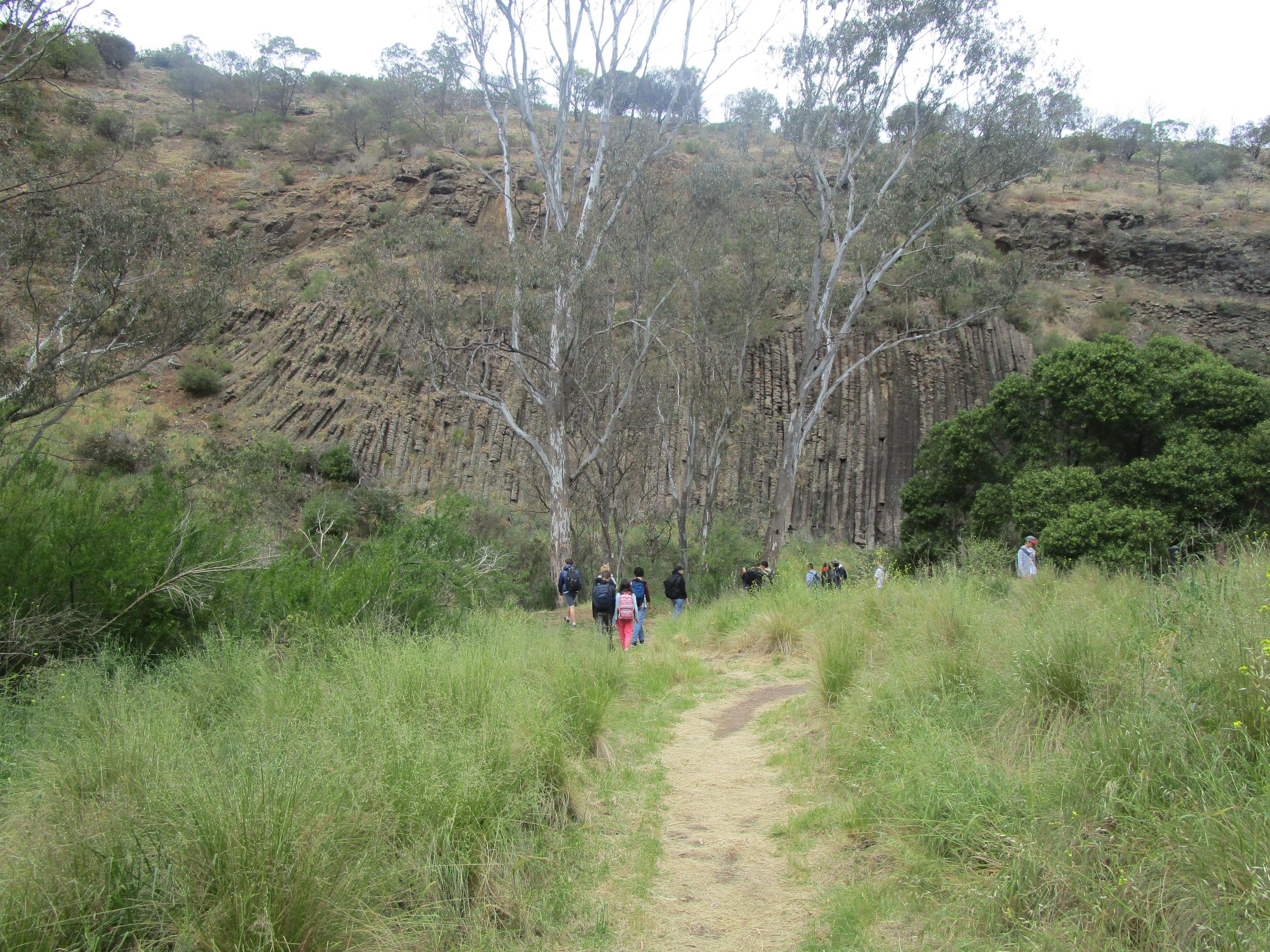YEAR 8 ORGAN PIPES EXCURSION

On Wednesday the first of November, students in 8G, 8A and 8F visited the Organ Pipes National Park and studied the geological processes that lead to the formation of igneous and sedimentary rocks.
On our excursion we observed three different geological formations, the tessellated pavement (formed when the lava from volcano melts creating patterns in the rock), the organ pipes ( formed while the lava was cooling cracks formed in the rock), and Rosette rock (formed when a lava pocket/cave was cooled in a spherical formation).
The Organ Pipes are a spectacular example of basaltic columns. Rising up to 20 metre in height, the pipes are up to 1 metre across and are hexagonal in cross section. They are formed when lava flows fill a valley cracking vertically as the lava cools forming basalt and shrinking. Five hundred metres upstream of the Organ Pipes, overhanging the northern bank of the stream, we saw a large outcrop of basalt with a radial array of columns resembling the spokes of a giant wheel called Rosette rock. It was formed by the radial cooling of a pocket of lava, probably in a spherical cave formed from an earlier lava flow. On the valley floor 250 metres upstream of Rosette rock is a basaltic outcrop which has a tiled or mosaic-like appearance. It is another area of columnar basalt called the Tessellated Pavement; but instead of the vertical faces being visible as at the Organ Pipes, the horizontal faces are visible-so you can walk and climb over them. The columns tend to be hexagonal, but many sides of unequal length and there may be from four to eight sides on each column.
We all had a fascinating day exploring the National Park and marvelling at the geology and we also got a chance to complete the Climate Trail which starts at the Organ Pipes carpark and passes a number of checkpoints where we had to make observations and record indicator animal and plant species on our recording sheet as well as make observations of behaviour and different phenophases. This citizen science project is part of an Earthwatch project where climate trails have been created in different rural locations to help scientists build up a picture of how global warming is impacting animals and plants in different types of ecosystems. The whole day was a great learning experience for all who took part. Thank you to Elaine Rose, Michael Hardiker and Elizabeth Simpson who helped organize the excursion.
